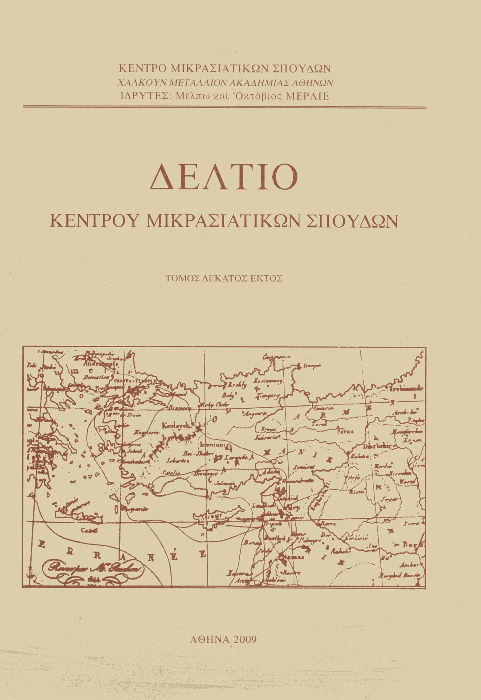Contribution to the study of Niketas Paphlagon
Abstract
In the second half of the 9th century a.c. Niketas Paphlagon was born in Byzantium. He was an exceptional personality, who lived until the first half of the 10th century a.c. He was named Paphlagon after the place he was born, that is Paphlagonia of Asia Minor, and is also referred in literature as Niketas David Paphlagon, rhetor, teacher, philosopher, Holy man, slave of Christ and monk. There are some 52 known written works of him, most of them are orations describing the lives of Saints and some encomia. They were all written after the year 910 a.c. when Niketas supposedly withdrew somewhere unknown in Paphlagonia. By his writings about St Stefanus' miracles and the transportation of his relics from Jerusalem to Constantinople, one can conclude that he was living somewhere near Amastris, probably in the city of Dadybra. Niketas' work about the life of St Yakinthos of Amastris supports the hypothesis that he was a bishop of Dadybra and lived there until the end of his life. A reference in the codex A 104 in Dresdes’ Royal Library about a Turkish attack at the city where St Niketas’ body was laying 170 years after his death is in accordance with the first Turkish attacks in Dadybra. From the aforementioned one can conclude that Niketas Paphlagon went to Dadybra of Paphlagonia, near Amastris, after the year 910 a.c., where he was appointed as bishop in the bishopric of Dadybra, served in the church of St Stefanus, wrote all of his works, and stayed there until his death.
Article Details
- How to Cite
-
Αρτόπουλος Ι. Γ. (2009). Contribution to the study of Niketas Paphlagon. Bulletin of the Centre for Asia Minor Studies, 16, 107–118. https://doi.org/10.12681/deltiokms.9
- Issue
- Vol. 16 (2009)
- Section
- Articles

This work is licensed under a Creative Commons Attribution-NonCommercial-ShareAlike 4.0 International License.
Authors who publish with this journal agree to the following terms:
- Authors retain copyright and grant the journal right of first publication with the work simultaneously licensed under a Creative Commons Attribution Non-Commercial License that allows others to share the work with an acknowledgement of the work's authorship and initial publication in this journal.
- Authors are able to enter into separate, additional contractual arrangements for the non-exclusive distribution of the journal's published version of the work (e.g. post it to an institutional repository or publish it in a book), with an acknowledgement of its initial publication in this journal.
- Authors are permitted and encouraged to post their work online (preferably in institutional repositories or on their website) prior to and during the submission process, as it can lead to productive exchanges, as well as earlier and greater citation of published work (See The Effect of Open Access).




